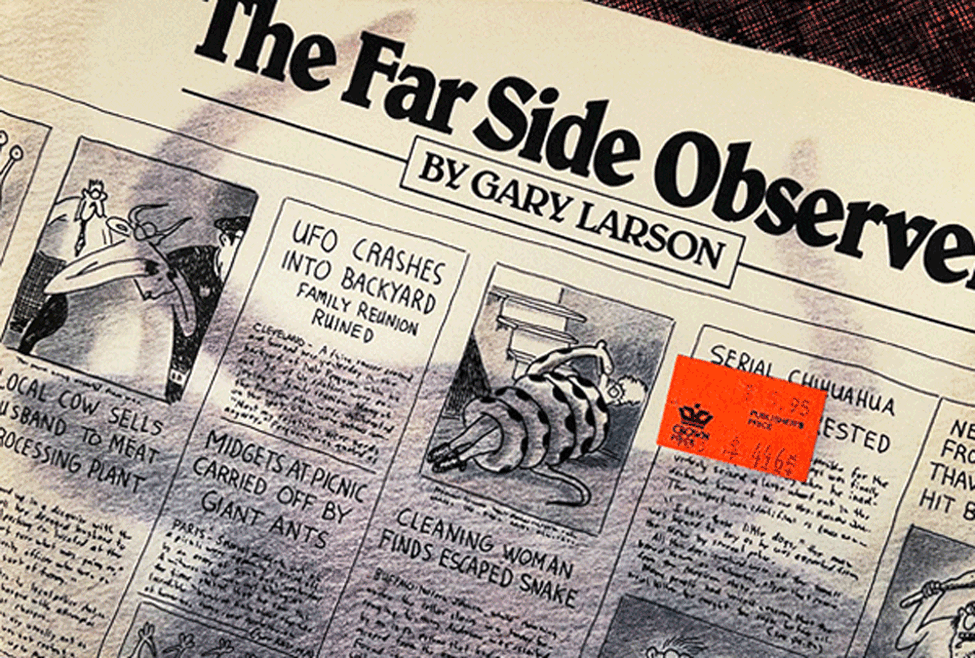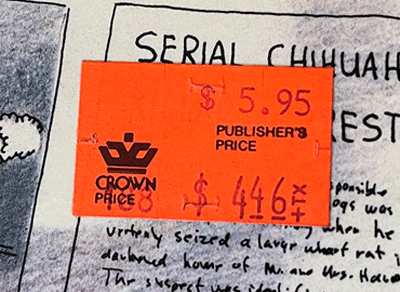Experience Stacks and physical objects
Experience Stacks and physical objects
A price sticker triggers a trip down memory lane… and an explanation about how Experience Stacks can help us to understand how physical objects function in our memories.
By Brad Berens
One of my ongoing topics in this column is what I call Experience Stacks, which are the improvisational things that customers do over time with and around the things that companies make.
Experience Stacks are hard to talk about because we know their general shape but not their specific contents.
It’s a bit like the famous pointillist painting, “A Sunday Afternoon on the Island of La Grande Jatte” by Georges Seurat. The closer you get to the canvas, the less sense the picture makes as it dissolves into tiny dots: to see the whole you need to stand back.
Experience Stacks are also hard to talk about because they apply idiosyncratic external context to a shared experience. These applications overlap with fan references (e.g. Easter Eggs in DVDs) or broadly recognizable cultural references, but they aren’t the same.
In earlier columns, I’ve mostly used Experience Stacks to talk about media experiences (movies, television, social media), but the idea of an Experience Stack is also a useful tool when talking about physical objects.
For example, while visiting family last week I plucked The Far Side Observer off a shelf:

This was the 10th collection of Gary Larson’s inimitable, weird, and hilarious comic strip, first published in 1987. Before opening the book, the orange sticker caught my attention.
Here’s a close-up:
 For those too young or insufficiently bibliophilic to remember, in the final years of the twentieth century Crown Books did to independent bookstores what Amazon later did to Borders: it undercut the independent bookstores on price and drove them out of business. One big difference between Crown and Amazon is that Crown had a narrow selection of titles, which flattened the available books to buy. In contrast, Amazon has an infinite selection that caters to the long tail, but I still miss browsing in physical bookstores and rejoice that I live near Powell’s.
For those too young or insufficiently bibliophilic to remember, in the final years of the twentieth century Crown Books did to independent bookstores what Amazon later did to Borders: it undercut the independent bookstores on price and drove them out of business. One big difference between Crown and Amazon is that Crown had a narrow selection of titles, which flattened the available books to buy. In contrast, Amazon has an infinite selection that caters to the long tail, but I still miss browsing in physical bookstores and rejoice that I live near Powell’s.
Like Proust tasting his madeleines, that orange sticker involuntarily pulled me back in time. I don’t know that I was the family member who purchased the book, but I could see the aisle (two thirds of the way in and on the right, but not all the way to the right) where it would have been on the shelf at the Crown Books on Van Nuys Boulevard.
The orange sticker makes an Experience Stack visible, which is unusual. It is an external marker of when that copy of The Far Side Observer entered my family’s possession and when it became a block in my Experience Stack for The Far Side. Keeping that sticker on the cover distinguishes our copy of the book from most other copies, giving our copy a tiny, fragile amount of what the early 20th Century philosopher Walter Benjamin called “aura.” The aura is tiny and fragile because all it takes to erase our awareness of it is peeling off a sticker.
People do things with their experiences, and they seek out new experiences that are both novel and that build on their previous experiences. Companies that understand this can make it easier for people to build their Experience Stacks even though the company cannot see the content of those stacks.
This can be a competitive advantage.
__________

Brad Berens is the Center’s strategic advisor and a senior research fellow. He is principal at Big Digital Idea Consulting. You can learn more about Brad at www.bradberens.com, follow him on Twitter, and subscribe to his weekly newsletter (only some of his columns are syndicated here).
See all columns from the Center.
September 16, 2022

